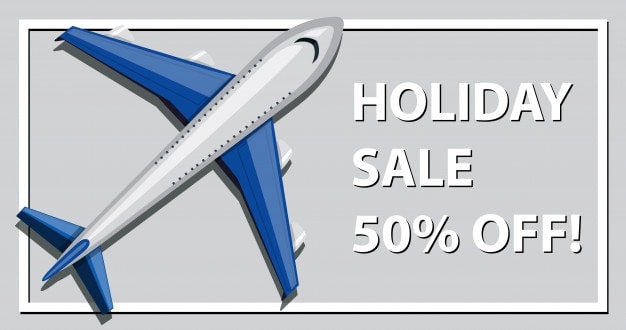Dynamic pricing is basically that business strategy in which the entities (companies) set up prices for both the product and the services provided by them which are quite flexible in nature. This is done depending on the current market demand which is heavily influenced by the condition of demand and supply in the marketing field.
Table of Contents
The concept of Dynamic Prices
Dynamic prices is also known with several other names like surge pricing, time-based pricing or the demand pricing. The strategy of dynamic prices enables the various business entities to price the product or service based on market demand and a set of firmly based and well-calculated algorithms.
The algorithm takes various factors into account which includes the supply and demand, competitor pricing and various other external factors as well that are known to influence the market.
A few marketing sectors like the travel, hospitality, entertainment, electricity, public transport retails etc widely practice the strategy of dynamic prices. With a slightly different approach to reallocating the prices depending upon the needs of its customers, the business ends up having a lot of benefits.
This dynamic prices is designed especially for the internet based market which in recent times has gained massive popularity. The internet allows the seller to make a change in the prices which in turn depends on the fluctuation in demand. Thus through dynamic prices one is able to make changes in the prefixed prices setting which is influenced by the resent day requirements and latest trends.
How does dynamic prices work?
To implement dynamic prices, specialized bots or properly designed coding programmes are used. These help in scrapping through the analytics of the websites, big data and other insight data which is related to the market or the user. Now once this is done these bots and programs try to gather as much information as possible related to the competitor, market pricing and other critical information’s related to market demand.
Many other factors such as targeted customer’s age, their geographical location, time (days/weeks/months), the competitor in the market, pricing of the product or the service and in general an overall demand help in setting up the dynamic pricing. Once this is done the various online platforms like the travel commerce websites or other online app services start implementing these dynamic pricings. In this way they are able to offer different prices to their users completely based on market demand. The prices here depend on both, the time and location of the user, like the place from which they are ordering and the products that is being ordered.
Examples of Dynamic Prices
There is a reason why dynamic pricing is called real-time pricing. In dynamic pricing one can instantly alter the price rates of one’s products or services depending upon the market demand, profitability aspects, growth and other trends. This dynamic pricing are allocated by softwares that are highly flexible in nature. There are several examples where one may have come across the dynamic pricing in their day to day lives.
One such example can be seen in the airline industry. The airline industries use advanced computerized systems so that they can alter the prices of the tickets frequently. Adopted along a wide continuum, this dynamic pricing ranges from constant to infrequent alterations. These airlines industries alter the prices depending upon several factors like the viability of the seats, number of seats type of the seats and also the duration of time before which the flight departs. Thus for a single seat in flight, there can be several different prices possible based on demand.
Another example that can be seen is in the field of music concert businesses. Some of the major players in this field use the dynamic pricing to increase the sales of the concert tickets. They keep the prices low initially and then raise the prices as the concert dates come near. Now if the prices are kept low throughout, then the seller does not get any profit. So when there is a fluctuation in the demand the seller is able to benefit by reducing the prices as the demand decreases and increasing the prices once the demand starts to increase.
Application of Dynamic Prices Model
Due to its flexibility, dynamic pricing is used in a wide array of industries. The various sectors in which it is used are hospitality, transport, retail, sports etc. some of these are discussed below.
1) The tourism sector
The tourism industry uses surge pricing quite often. They set higher prices during the peak season’s or when there is some special event taking place. During these times there are a good number of tourists visiting the place. But when there is an offseason going on they tend to reduce the prices of hotels and other tourist related things.
2) Transportation
The airline industries is the most frequent user of the dynamic pricing facility. The industry alter the prices frequently depending upon the time of the day, week, the number of days before the flight will finally take off and many other factors. Also when it comes to public transports and roadways the same things is seen. Even on demand transportation companies like Uber uses this mechanism to attract more people. When setting up their company in a city they use the dynamic pricing to provide a discount to their customers. This way they are able to increase the demand and once the company attends saturation they increase the prices.
Importance of dynamic Prices Model
Dynamic pricing leads to growth in the sales and also generates a lot of profitable revenue. It is a real time pricing technique that helps in setting a flexible cost of the product or service. The importance of dynamic pricing can be seen from the fact that it allows real time change in the pricings and the process of dynamic pricing isn’t complicated either.
Simply by collecting and doing the analysis of the data about their targeted customers, the seller is able to accurately predict the value of the product or service and price it accordingly. With the software’s used for the dynamic pricing, the seller can know the approximate value of the price that the buyer is willing to pay and then according to those standards they will set their prices. Thus it helps a lot to the sellers in increasing the sales of their product as well as their profit margin.
Here is a video by Marketing91 on Dynamic Pricing.
Advantages of dynamic Prices Model
- Flexibility – You can have flexibility in terms of selling the product that too without making any compromises with the brand value of it. Dynamic pricing helps them in strengthening and protecting their brand value. They are able to set basic price for their brand and then by making alterations in them, they are able to grow their sales and make profit out of it. They get to launch both seasonal and promotional offers which attract customers.
- Controllability – By the help of dynamic pricing, the sellers get a better curb over their pricing strategies. They can access real time trends in the pricing of several products that are launched in the industry. Thus they are able to set the right price and hence maximize their revenues and profit.
- Easily manageable- Also dynamic pricing is quite practical when it comes to its proper management. With the right kind of software built on the basis of a properly programmed algorithm, one can do the dynamic pricing by sitting at one place. The software makes it quite easy to manage hundreds of thousands of product at a time and alter their prices accordingly.
- Saves a lot of money- now since the dynamic pricing is based on the real time product supply mechanism, it becomes easy to monitor the price fluctuations in the market and the activites of their competitors. Thus with the right data and valid information’s about the market and their customers they are able to set the pricing in the manner in which they will be able to increase the revenues as well as profit.
- Maximum profit can be obtained- one of the most essential aspects for a successful business is the maximization of profit. And with dynamic pricing, it becomes quite practical and easy to do that.
Disadvantages of dynamic Prices
- More time needs to be invested in the marketing activity– since the dynamic pricing takes place quite frequently the buyers have to dedicate a lot of time s o that they can remain update with the marketing scenario form time to time and make change I the prices accordingly.
- Monitoring of the competitor- to monitor the competitor is quite an essential aspect of dynamic pricing. This in turn increases the additions expenditures because the seller has to invest in the separate competitor price monitoring system.
- Confusion among customers- Due to the constantly changing of prices, the customers get confused about which products to buy at what price. This indirectly leads them to not being able to use the dynamic pricing and instead go for the fixed prices.
Thus dynamic pricing has both advantages and some disadvantages of dynamic prices. But if its application is used in a smart and strategic manner it can bring a lot of profit to the sellers.
Liked this post? Check out the complete series on Pricing

